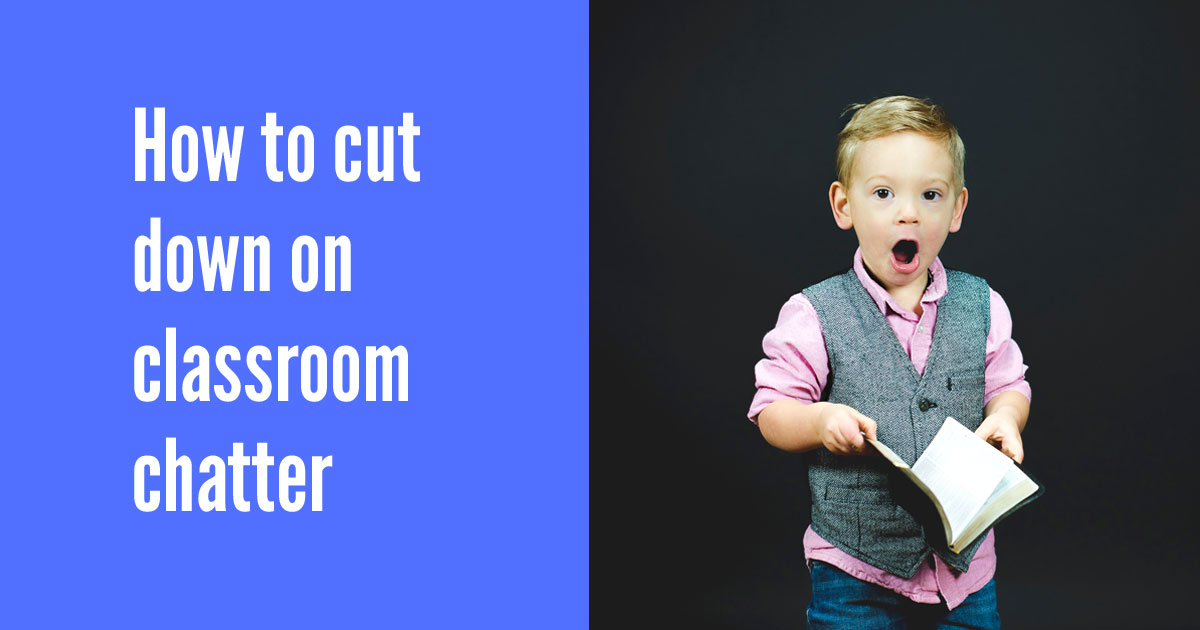Exploring through talk is a useful way to start a topic…
…if that’s what the students are actually doing
And you’ll usually be guiding that discussion. But left to themselves, students will also talk about everything else.
That’s human nature.
Before you know it, the work rate has slowed right down. And there may even be social disputes, either in the lesson or scheduled for a later face-off.
Why not spare them and yourself the grief?
You've given them the learning ingredients – now get them cooking!
Here's how to make sure the talk in your classroom is on-task and productive.
Set the ground rules at the very start – then rinse and repeat
Children need to know what to do, why they should do it, and what will happen if they don’t.
So explain that:
- Sometimes we need to listen to adults, or to work in silence
- This is so that we can concentrate on what we are learning/doing
- There will be a consequence for anyone who stops us learning
Note: stress that "silence" does NOT mean "a low voice/whisper."
Establish what a child should do if they need help. A "hand up" is most usual in schools, of course, but make it clear what you will pay your attention to – and what you won’t. Children with their hands up (or whatever your classroom routine is) will be given priority over:
- those calling out across the class
- those walking across the classroom when they shouldn’t be
Use visual reminders
Display your rules about quiet working and refer to them. Frequently.
The display could take the form of a noise level dial (in the shape of a volume control). The dial goes from "total silence" through "quiet talking" to "group discussion".
At the start of a task, explain to your students where you expect the noise level to be.
When you need the class to work in silence, talk through the reason for that silence. This will help your students understand the reason and take on board your expectations.
If there isn’t a specific need for silence, you can ‘turn the dial’ up a bit, reminding them what sound level is permissible.
Signal the transition to "silent running"
Keep it simple. I once knew a very effective teacher who would clap his hands and say "Right!" when the lesson was to start.
There are other ways of doing this:
- saying, "Quiet, please."
- hold a hand up
- turn the lights off and on again
- put something on the interactive whiteboard
Find a signal that is clear, obvious and works for you and this year’s class.
(Another alternative that has become popular recently is for the adult to clap a rhythm, and for the class to clap it back. Be aware there are drawbacks to this method: I’m aware of a number of children with behaviour needs who delight in randomly clapping that rhythm on behalf of the class teacher during the middle of a lesson. Before the teacher knows what happens, half the class have put down their work to clap, and the other half are looking around, wondering what on earth is going on…)
Be vigilant
This is a toughie, because when the class is working, you’ll want to help children who are having difficulties with their work – and you’ll want to pay them your full attention. But while you do, the whispering and off-tasking can start.
Pay attention to the following when you begin working with an individual student:
- From where you’re sitting, can you see the rest of the class? Or do you have your back turned to many of them?
- Classroom layout – have you arranged the desks/tables so it’s easy to see everyone?
- Have you arranged pupil seating to separate "partners in crime"? Move students with a track record of persistent talking away from each other, so they’re unable to communicate by face or gesture.
- Do you have a TA or other helper? You could take turns being the Eye of Sauron.
Shower them with praise
You’d use positive reinforcement to train a dog, and children are even smarter!
When it’s all going well, praise the class; or the group that’s working best.
You can also praise individuals, of course. As we explain in this video about what to do when praise doesn’t work, be really specific about the behaviours you’re praising.
This tells other children in the classroom what you’re actively awarding your attention for, so that good behaviour is more likely to spread from student to student.
And finally…
In my first year of teaching, I spoke to a very capable lady nearing the end of her career. She told me that when she started, she chose a successful colleague to imitate.
She copied everything, even the vocal and gestural mannerisms. It worked, and in time she evolved her own style; but it had given her a great start.
Enjoy your own evolution!

